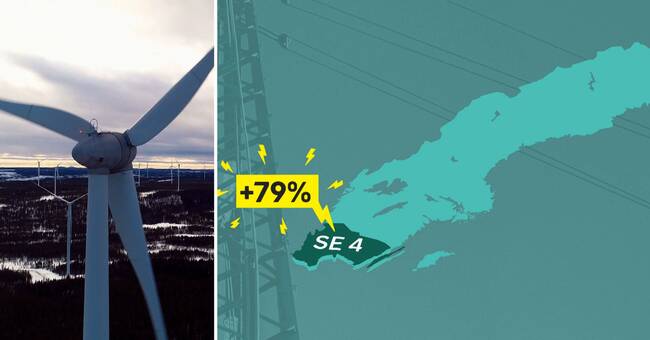Sweden must be rebuilt.
The borders that make up the country's four different electricity trading areas, where prices are set, will now be changed.
But major problems will persist, according to state-owned Svenska Kraftnät, which is now investigating the changes in electricity areas.
- There is a very large transfer restriction between northern and southern Sweden, we are working to get rid of it.
But we see that it will remain for about 20 years, says Mårten Bergman, unit manager at Svenska Kraftnät to SVT.
Transmission problems of electricity
Most electricity production in the north and most use of electricity in the south, and a pipeline network that is unable to do so creates transmission problems.
There is a price for the situation right now - here are some examples:
Last year, it was on average 79 percent more expensive to buy electricity in the far south than in the north.
The day with the largest price difference last year, electricity in the south cost 564 percent more than in the north (June 6).
The hour with the largest price difference last year, electricity in the south cost 564 percent more than in the north (November 30 between eight and nine in the morning).
Such price pressures have led the forestry company Holmen to temporarily stop the paper machines, most recently a few weeks ago.
New electricity areas
Svenska Kraftnät now proposes that the north become an area and the south one and that the Stockholm area be broken out, but the boundary between north and south remains.
- Electricity production ends up in parts of the country due to reasons other than the division of electricity areas and the companies that have already established themselves can not move due to a stronger price signal (higher prices, editor's note), says Lina Håkansdotter, head of sustainability and infrastructure at the employers' organization Svenskt Näringsliv.

